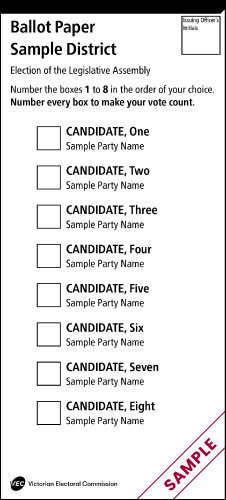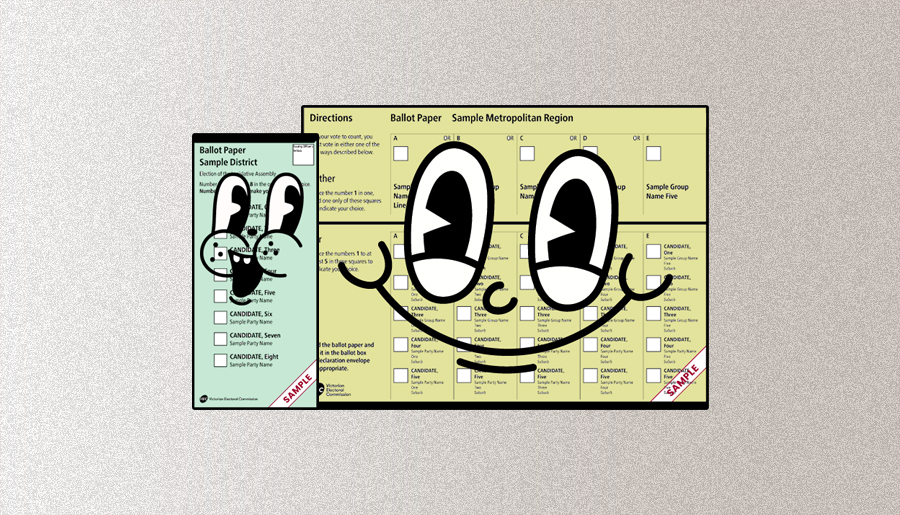It’s here, the most magical time of the year. Nope, I’m not talking about Christmas. Folks have been celebrating Chrissy for aeons now, it’s old hat. However, choosing democracy over tyranny or being commanded by a king? Now, that’s some buckwild shenanigans right there.
Yup, we’re discussing the Victorian state election. This event is happening in person on November 26.
However, the last Victorian election was in 2018. That was before COVID or that time lettuce cost more than 200 gold chocolate coins. Ergo, you might need a bit of a refresher on how this election system works.
Well, don’t panic, here’s your handy-dandy guide for the 2022 Victorian state election:
Make Sure You’re Enrolled to Vote
If you live in Victoria and don’t vote, you’ll get slapped with a $92.00 fine. It’s therefore in your best interest to make sure that you’re enrolled.
You can check if you’re enrolled and if your enrolment info is up-to-date on the Victorian Electoral Commission (VEC) enrolment hub. However, the last day you could enrol online was November 8.
Fortunately, if you missed the enrolment deadline, you can do this task in person.
“If you missed the deadline, you can still vote. Visit a voting centre to enrol and vote on the spot. Make sure you bring your ID, such as a driver’s licence, learner permit, Australian passport, or a recent electricity bill or council rates notice in your name and showing your address. Let one of our voting centre staff know you are not enrolled, and they can assist you,” said the VEC in a statement.
Check Which Electorate You’re In
In 2018, the Electoral Boundaries Commission (EBC) reviewed Victoria’s district and region boundaries. This resulted in some districts and regions changing in order to keep about the same amount of voters in each electorate. These changes came into effect after Victoria’s last state election.
“There are nine new districts, nine districts no longer exist, one region has been renamed, and most other boundaries have been adjusted,” said the VEC.
“You may be enrolled in, and need to vote for, a new district or region, even if your address has not changed.”
To learn what electorate you’re in, you can use the VEC’s maps database or interactive map.
Related: How to Actually Vote in an Australian Federal Election
Related: US Mid Term Elections — America Surprisingly Rejects Dystopia, Trumpism
Check Your Local Candidates’ Policies
Don’t get bamboozled on election day by voting for the wrong human. And by the ‘wrong human,’ I mean someone whose values don’t line up with your own.
Seriously, it doesn’t take a gnarly amount of research to determine a candidates’ position on climate change, refugees, or whatnot. Once you know who your local candidate is, it’ll take you less than ten minutes to Google everything you need to learn.
Additionally, if you won’t do it for yourself, do it for me. Thank you.
If you want to learn who your local candidates are, then follow this A+ link here.
It Might Be Wise to Vote Early?
This year, the VEC is encouraging Victorians to vote early. However, while this means that these voters might miss out on having a democracy sausage, the VEC has a good reason for making said suggestion. They don’t want anyone to miss voting due to catching COVID.
From November 14 until November 25, you can vote early at an early voting centre. You can find your closest early voting centres here.
Nevertheless, if you want to vote on November 26, that’s cool too. You can use the same link as above to learn which voting centres are the closest to ya.
You Can Also Postal Vote
If you thought that it was too late to get a postal vote in this election, you’d be wrong. This is because the last day you can apply to get a postal vote is November 23. However, make sure that you leave enough time to receive your ballots and then send them back.
You can apply to receive a postal vote at the Australia Post joint, the VEC’s head office, your district election office, or online here.
Moreover, you can choose whether the VEC will send you a physical copy of your ballots or email you printable ones. If you’re overseas, the VEC has strongly recommended that you receive your ballots online.
There are three main ways that you can return your ballots in this election:
- You can drop your ballots off at the VEC’s head office. The address of this place is 11/530 Collins Street, Melbourne.
- You can scan or take a clear photo of your ballots and email them to cpc@vec.vic.gov.au.
- If you’ve received a physical copy of your ballots, you can post them back using the reply-paid envelope attached to your form.
How to Use Your Ballot Papers
When you rock up to vote, you’ll be given two ballots. One is for the Lower House and the other is for the Upper House.

“The Lower House ballot paper is the smaller of the two ballots issued to you. To vote, put the number one in the box next to the candidate you most want to see elected. Then number all the other boxes in order of your choice. Number every box and only use each number once,” said the VEC.
The bigger of the two ballots is for the Upper House. On this ballot, you can either vote above or below the line.

“To vote above the line, put the number one next to your preferred group of candidates in one of the boxes above the black line. This means that your preferences will be determined by the group you vote for, in line with one of its group voting tickets.”
After doing this, you leave the rest of the boxes unmarked.
“To vote below the line you need to number at least 5 of the candidate boxes below the black line in order of your preference. You can continue numbering if you wish, but you must choose at least five candidates,” the VEC explains.
“If you make a mistake, that’s okay. You can cross it out and put the correct number next to it. If you’re worried we won’t be able to interpret your corrections, you can return your ballot paper to the election staff and ask for a new one. If you damage or tear your ballot paper, you can return it to the election staff and ask for a new one.”
Read more stories from The Latch and subscribe to our email newsletter.







